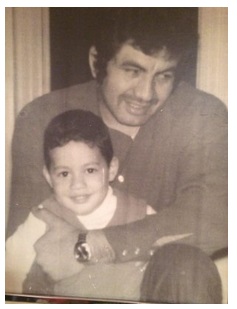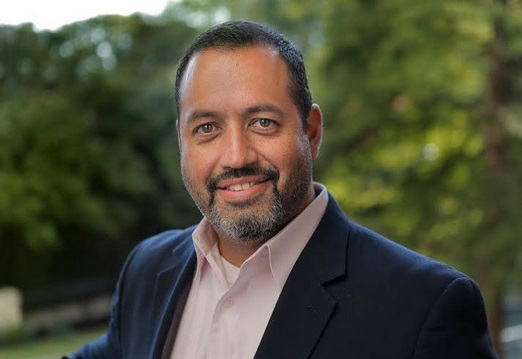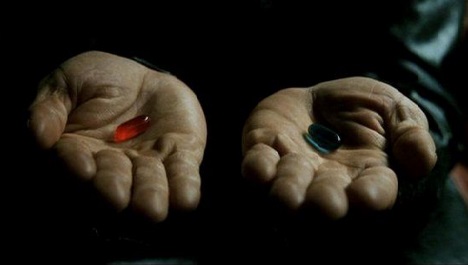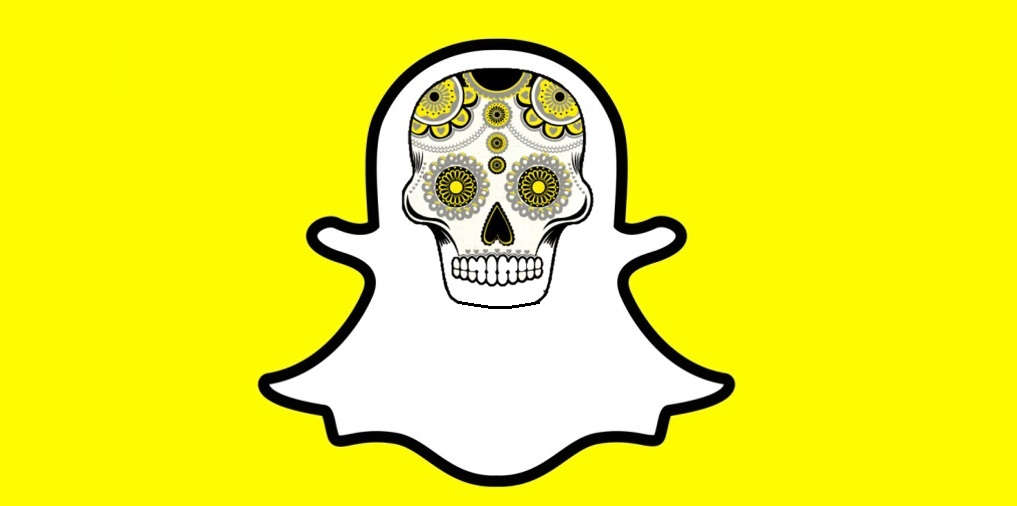That’s Not How You Pronounce My Name
Hugo Balta, Senior Director, Multicultural Content at ESPN
Last week I saw a very uncomfortable Vanessa Ruíz, a television news anchor from Phoenix, Arizona defend why she pronounces Spanish words correctly. She responded to the spiteful social media reaction during a broadcast.
At first I couldn’t understand why she was explaining herself. But as I continued to listen and learn more about the criticism surrounding her, it became apparent. This was yet another instance of fear of change resulting in shameful ignorance by people who love to say, “This is America, speak English”.
It reminded me of a certain Republican presidential hopeful who can’t stop tripping over himself or the woman at the fast food restaurant caught on tape a few weeks ago ridiculously comparing speaking Spanish in the U.S. to Nazism.
Absurd.
I’m sure many of you can relate to getting dirty looks from people, maybe in the workplace, for speaking Spanish. Why do they think we’re talking about them? I want to say to them, “Stop being paranoid, you’re not that interesting”.
Vanessa’s public address got me thinking about all of these related situations…rolling r’s, pronunciations and my name.
My parents named me Hugo after mi Papá. Here I am when I was called Huguito. I’m still, Huguito and always will be to my parents.
 Soon after this picture was taken I started grade school where teachers pronounced my name HYOO-go.
Soon after this picture was taken I started grade school where teachers pronounced my name HYOO-go.
Kids don’t often question authority figures like teachers, but this future journalist did and I corrected them. “My name isn’t HYOO-go”, I said. “It’s OO-go”. “No”, they said, “in English it’s HYOO-go”.
So, I conformed or as conservatives and the like often say - I assimilated.
My name was OO-go at home and HYOO-go as soon as I stepped outside.
That went on from grade school to high school to my university years and into adulthood. Latinos often pronounced my name correctly, everyone else butchered it.
I’ve been called Hugh, Hu, Huey and Yugo.
This is Yugo…

This is Hugo…

One big difference between us is you’ll get more miles from Hugo.
Throughout the years I’ve brushed off the mispronunciation of my name, joking that as long as my name was spelled correctly on my paycheck you could pronounce it any way you like.
Thinking of pronunciations reminded me of a friend I made in South Florida when I worked at NBC 6. Her name is Patricia (pronounced puh-TREE-see-ahh). The first time I met her I pronounced it puh-TRIH-shuh. She made sure I didn’t make that mistake again.
A few weeks ago I learned that my nephew Juan Andrés asked his parents to change his name to John Andrew. He was being bullied at school.
Our names matter. They assist in defining ourselves. Beginning with our parents and the tone they use when saying it - our name can be music to our ears or dread.
I wrote a blog: Welcome To The United States, Aquí Se Habla Español about the necessity to speak Spanish in this country based on study after study on the U.S. Hispanic population growth. I was attacked by some for actually stating the obvious - this country is bilingual.
 Which brings us to the GOP front runner for the party’s presidential bid.
Which brings us to the GOP front runner for the party’s presidential bid.
Donald Trump criticized fellow GOPer Jeb Bush for speaking Spanish recently, saying “when in the U.S. speak English”.
I’m not supporting Bush. He stepped on it with his anchor babies comment during a recent interview.
Generalizing Mexicans as criminals.
Dehumanizing a group of people as illegals.
How to pronounce words.
Enough.
This is all about control. Who gets a seat at the table of power. The decision makers asserting themselves.
“Assimilate”. “Assimilate like every immigrant community before yours”. Assimilate sounds a lot like the Borg from Star Trek: The Next Generation.
For you non geeks…The Borg are a cybernetic race of clones that use a process called “assimilation” to force other species into their collective.
Assimilate. The establishment wants us to conform. Look like them. Speak like them. Think like them.
Many company diversity and inclusion initiatives are nothing more than smoke and mirrors. They hire for a candidate’s diversity, but reward them for their conformity.
What’s the point of hiring someone for their diverse background and experience (and I’m not just talking about race) if once they get their foot in the door they are forced to follow the existing corporate culture… which is not reflective and inclusive of them.
An on-air journalist shared with me recently that during her annual review she was criticized for having a Spanish accent.
What?
First of all many people mistake a southwestern accent as a Spanish accent.
They should really get out more.
Second, Spanish is the second most spoken language in the U.S.
Chances are likely you’re going to come across a Spanish accent more frequently than say a British accent, but no one bats an eye when a person with a British accent presents the news.
Assimilate? Well we are not assimilating… we are acculturating. Latinos are adapting some traits from American culture and fusing their own creating something new.
That’s why a few years ago salsa replaced ketchup as the favorite condiment in the U.S.
That’s why this hot dog…

Now looks like this delicious monstrosity…

Acculturation in music, sports, business and politics.
There are more than 25 million U.S. Hispanic eligible voters, 11 percent of the voting population… many live in two battleground states: Nevada and Colorado. The best weapon we have against prejudice and hate is our vote.
Sometimes I feel like I’m in the Matrix (yes, continuing to reinforce my geekiness). We’ve been conditioned to accept things as they are, live in these little boxes.
“Don’t rock the boat”.
“Don’t make waves and you’ll do just fine”.
And then someone like Vanessa comes along and reminds us that it’s not just fine.
Our choice. The blue or red pill.
“You take the blue pill, the story ends. You wake up in your bed and believe whatever you want to believe. You take the red pill, you stay in wonderland, and I show you how deep the rabbit hole goes.”

Plugged or unplugged? You have to decide.
Project Enye’s movement to get Twitter to allow the use of ñ on handles.
The National Hispanic Media Coalition, National Association of Hispanic Journalists and other organization’s plight to get all media to use undocumented instead of the defamatory term illegal in describing a group of people.
The demand for interpreters for Spanish speaking players in Major League Baseball.
It all matters.
And this of course applies to all communities. Be it ethnic, race, religious, sexual orientation and the like.
It’s not about politically correctness going amuck. It’s about being right or wrong. It’s about being fair and accurate.
It’s small. Perhaps for many people it will be insignificant. The faithful will cheer, the haters will roll their eyes… call me a pain in the ass.
You know the world could use a few more pains in the asses. In fact it is the American way right? If not for a few pains in the posterior about “no taxation without representation”, we would still be her Majesty’s colonies.
As a gesture of solidarity with Vanessa, borrowing a page from Prince who was formerly known as…
Allow me to reintroduce myself.
My name is Hugo pronounced OO-go.
I’m the person formerly known as HYOO-go, Hugh, Hu, Huey and once Yugo.
Thank you Vanessa Ruíz.
It can get lonely being the only one in the room. But that’s changing. Whether people like it or not you’re one of 54 million and growing.
Some have accents, some roll their r’s, some pronounce Spanish words as they were intended and all of us love salsa.
We’ve got the numbers and time is on our side.




 Researchers have shown that socioeconomic disadvantages such as lower income, education levels, and healthcare access usually translate to shorter lifespans. Based on this research, U.S. Hispanics and blacks (who have greater disadvantages compared to non-Hispanic whites) should have the highest death rates. But surprisingly, Hispanics are the ones defying the odds and living the longest – by age 80, the Hispanic death rate is 23 percent lower compared to that of non-Hispanic whites.
Researchers have shown that socioeconomic disadvantages such as lower income, education levels, and healthcare access usually translate to shorter lifespans. Based on this research, U.S. Hispanics and blacks (who have greater disadvantages compared to non-Hispanic whites) should have the highest death rates. But surprisingly, Hispanics are the ones defying the odds and living the longest – by age 80, the Hispanic death rate is 23 percent lower compared to that of non-Hispanic whites.